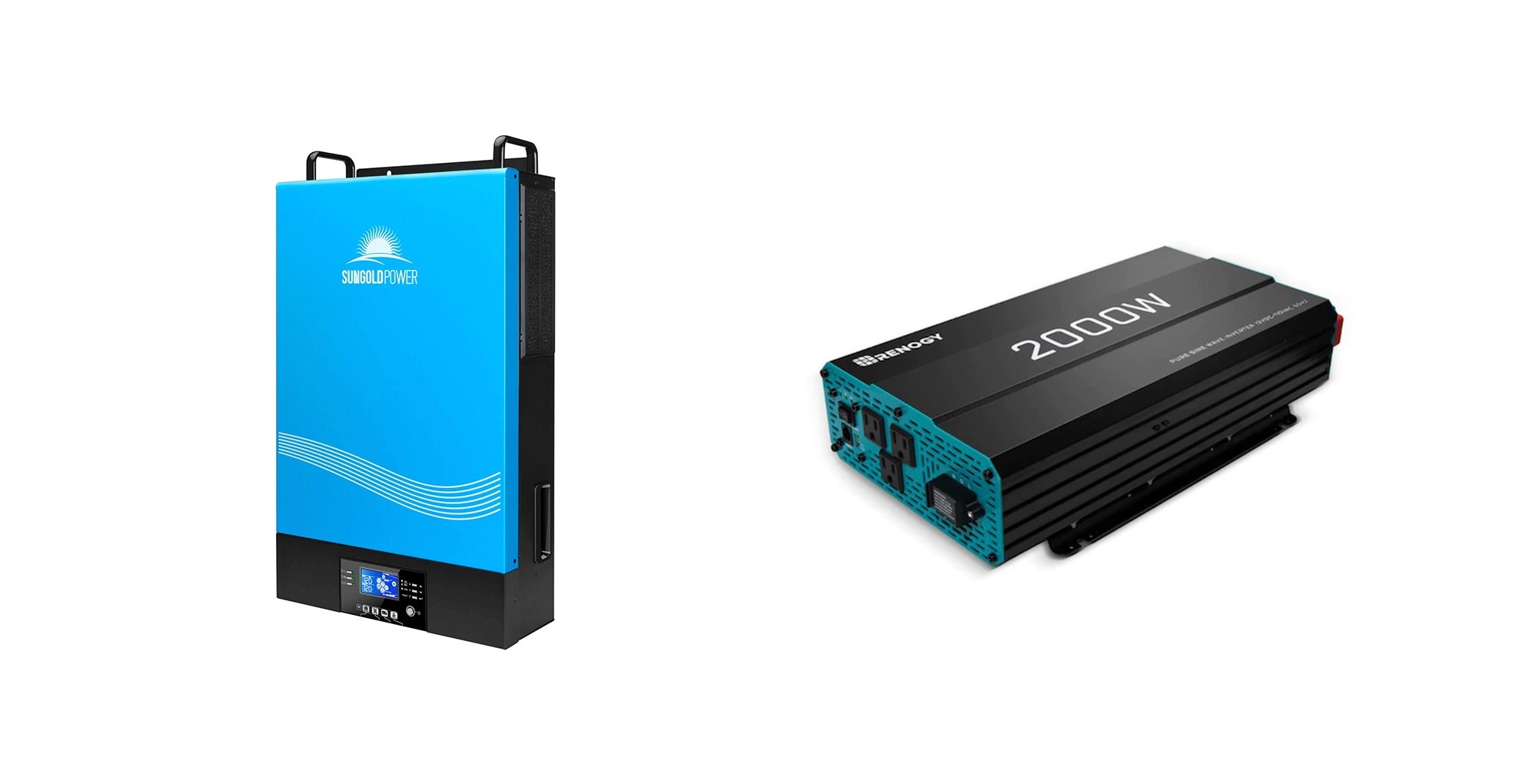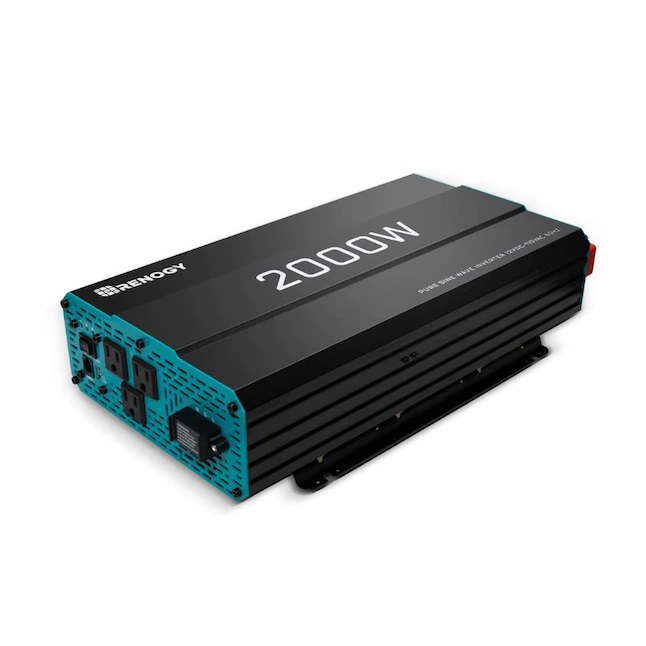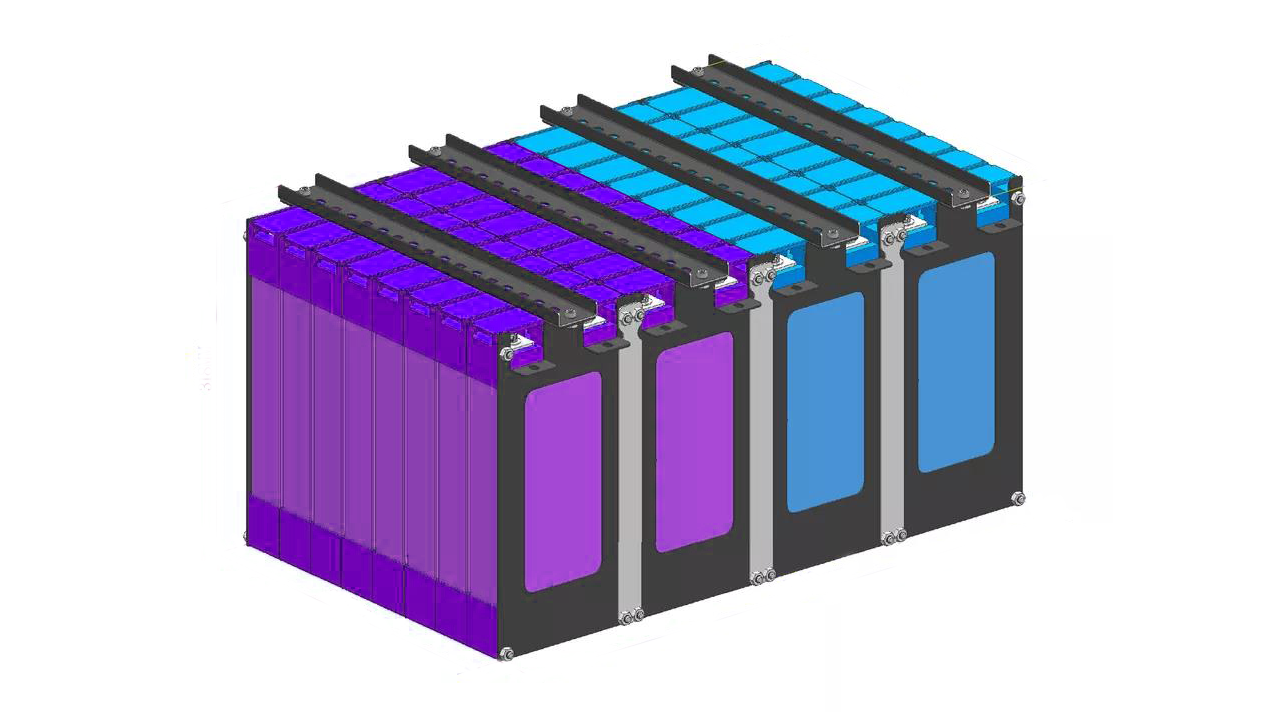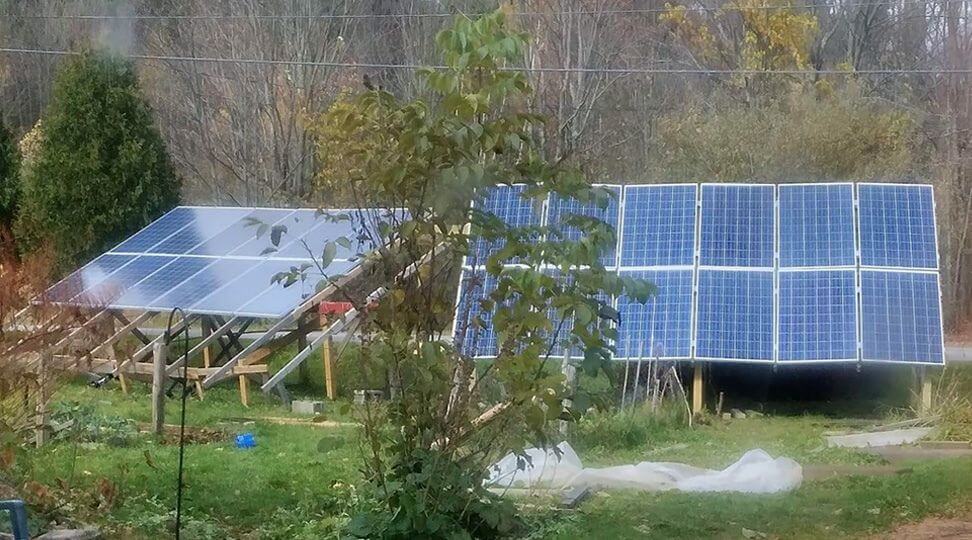
How To Size An Inverter
Table of Contents
A solar inverter is an often overlooked but critical aspect of a home solar system. The inverter is responsible for converting the DC power generated by the solar panel into AC power to run devices and appliances.
If you want to know how to size an inverter, the answer is simple. All you have to do is find out how much power your devices need. Then, do some simple math to determine how much more power you need to compensate for inverter losses and headroom. After that, you just need enough batteries to power your inverter within the timeframe your application requires.
While it's true that you do not need an inverter to use solar panels and batteries, if you want to power normal AC home appliances or high-current equipment like air conditioners and washing machines, you are going to need an inverter.
As the cost of solar panels continues to plummet, solar systems and their associated chargers and inverters have dramatically increased. This means there are many solar inverters available on the market to choose from. In this article, we will discuss the top 5 solar inverters. We will consider cost, size options, warranty, and efficiency when making this list.
An inverter is a device that takes a DC voltage and converts it to a higher AC voltage. Inverters allow batteries and other low-voltage power supplies to run high-voltage equipment that you would normally have to plug into the wall. Not all inverters, however, are made equally. So, it's important to know an inverter's capabilities before you try to use it in your application.
How To Estimate Inverter Size Requirements
In order to determine what size inverter you need, you have to know how much power your load draws. If you use an inverter that is not capable of providing enough current to your load, then it will overheat and shut down. In contrast, if you buy an inverter that is too large for your load, there will be a lot of money wasted in the process because high-current inverters aren't cheap.
So, you need to find out how much power the devices that you plan on powering with the inverter need. It's important to keep in mind that you cannot simply look at the rating on your device's power supply and assume that is how much power your device needs. For example, if you have a device that uses a 12V power adapter that's rated for 5 amps, that does not mean that the device uses 60 watts.
That only means that the power supply that is powering the device can supply up to 60 watts. If you build a system based on power supply ratings, you will end up massively overbuilding the system and spending a whole lot more money than you need to.
So, in order to get a good estimate of how much power your devices actually require, we recommend measuring each device's power needs with an AC-watt meter. Doing this will give you a relatively accurate figure to go on. In lieu of having one of those and actually measuring your devices (which is always the best option), you can use the data below to estimate somewhat how much power you are going to need.
NOTE: Remember that watts are all about hours. Even when you are working with watts and not watt hours, watts are still linked to hours. For example, if a TV uses 100 watts at any given moment to operate, that also means that it uses 100 watts of power over the course of an hour. This is referred to as 100-watt hours. So, the same 100W TV operated for 30 minutes will use 50 watts of energy.
TVs
A small TV or computer monitor can use as little as 20 to 25 watts of power. A larger computer monitor or large TV can use anywhere between 100 watts and 200 watts.
Computers
Laptop computers generally need 50 to 90 watts to charge their internal batteries and operate. A desktop computer can use anywhere between 200 and 1000 watts, give or take.
Phones
Phones generally take 5 to 10 watts to charge and run. Some phones support faster-charging rates and can operate in the 10s of watts.
Tablets
As you would expect, tablets require a similar amount of power as phones, albeit a little more because they have larger screens and batteries. Expect a tablet to draw 10 to 20 watts.
Stereos
Radios and Bluetooth speakers can use anywhere between 10 and 100 watts. Some high-end sound systems can use several hundred watts if you have the volume cranked up all the way.
Refrigerators
Shockingly, a full-size residential refrigerator only needs about 200 to 300 watts to operate. Deep freezers use even less power, requiring just 20 to 30 watts to operate.
Air Conditioners
A small window unit air conditioner takes about 500 watts to run. A full-size house air conditioner unit can take as much as 3500 watts to run!
So if you want to run a refrigerator, a radio, a tablet, 2 phones, a desktop PC with monitor, a laptop, a large TV, and a window unit air conditioner, that will be about 1400 watts total.
It's important to keep in mind that nothing is 100% efficient. This means that you won't be able to get all of the power out of an inverter that you put in it. The good news is that inverters are usually around 96 to 98 percent efficient. So if you need to deliver 1400 watts to your load, you will have to provide the inverter with at least 1428 watts of power.
It sounds like you may need a 1500W inverter to power the above load, but it’s not that simple. It’s never good to run anything at its limits, especially power electronics. So, however many watts you need for your load should be padded with an extra 20 percent. This will ensure the longest possible inverter life and the coolest operating temperatures.
1428 watts ÷ 0.8 (20 percent padding) = 1785 watts
So, to run a load of 1428 watts, you need an inverter that can do at least 1785 watts continuously.
Do I need a 12V Inverter vs 24V Inverter vs 48V Inverter
While all 120V inverters have the same output voltage, not all inverters have the same input voltage range. Inverters come in 3 different voltages: 12 volts, 24, volts, and 48-volt equipment. The amount of power running through a cable is a product of the voltage and the current. This means that if the voltage is higher a lower current will be required for the same amount of power.
Here are a few examples with a 1500W load:
1428 watts ÷ 12 volts = 119 amps
1428 watts ÷ 24 volts = 59.5 amps
1428 watts ÷ 48 volts = 29.75 amps
As you can see, the higher the voltage the better. This is because when the voltage is higher, everything else has to do less work. Copper isn’t cheap so cables can get quite expensive. A higher voltage means that much thinner cabling can be used as the cables will have to carry less current.
With this information, you may come to the conclusion that a 48V inverter is best. While that may be true, they are also extremely expensive. 12V inverters are very low cost and as you would expect, 24V inverters demand a premium over the 12V variety.
24V inverters have the best balance between performance and cost, which means that they are generally the best ones to use.
How Do Inverters Work?
An inverter works by employing sophisticated timing patterns and various components to convert a DC voltage into an AC voltage. An inverter cannot perfectly convert DC to AC, there will always be a power loss. The power loss in most commercially available inverters is very low, on the order of 2 to 3 percent.
Things To Consider When Sizing An Inverter
Budget
The battery is generally the most expensive component of any off-grid energy system, but inverters can get expensive. So, when sizing an inverter you have to weigh your power requirements against the inverter costs.
Continuous Vs. Peak Output
Peak output is the amount of power that an inverter can provide for a short period of time, generally when there is a temporary spike in demand. Continuous output, however, is the amount of power that an inverter can supply indefinitely.
So if you have a load that draws 500 watts, without considering inverter losses or overhead, you would need an inverter that can continuously supply 500 watts. A smaller inverter that can only supply 300 watts continuously and 500 watts peak would be too small for the job.
Voltage
For whatever reason, it seems to cost a lot less to make an inverter with a 230V output compared to an inverter with a 120V output. This is great news for many people but if you are one of the many that use the 120V system, make sure the inverter you are about to buy is rated for 120V.
Many excellent inverter deals online that look like they have everything you need at an unbelievable price are generally 230V inverters.
What About a Complete Home Inverter
It can be prohibitively expensive for many people to power an entire house using an inverter. That requires a very expensive inverter and a lot of very expensive batteries. It’s generally more economically feasible to power individual rooms.
However, if you are looking to power a large home with a large DIY powerwall battery it may make sense to use several all-in-one inverters and string them together.
Doing it this way makes it so that you can piece together an off-grid energy solution. It’s important to keep in mind, however, that this option is not viable for everyone and some people need entire house off-grid solutions.
Conclusion
The inverter is a critical aspect of any home off-grid system. The inverter is what converts the DC power stored in batteries into AC power used to operate consumer devices, tools, and common equipment. Knowing how to size an inverter can prevent you from overpaying and will prevent your off-grid system from underperforming.
Sizing an inverter is simple. Just find out how much power your devices need and then do some simple equations to determine how much more power will be required to safely and effectively operate your inverter. This is usually done by dividing how many watts you need by 0.98 to compensate for 2 percent inverter losses and then dividing that by 0.8 to give your inverter at least 20 percent of headroom. This will prevent your inverter from overheating and will provide the highest level of sustained performance.
We hope this article helped you learn how to size an inverter, thanks for reading!




